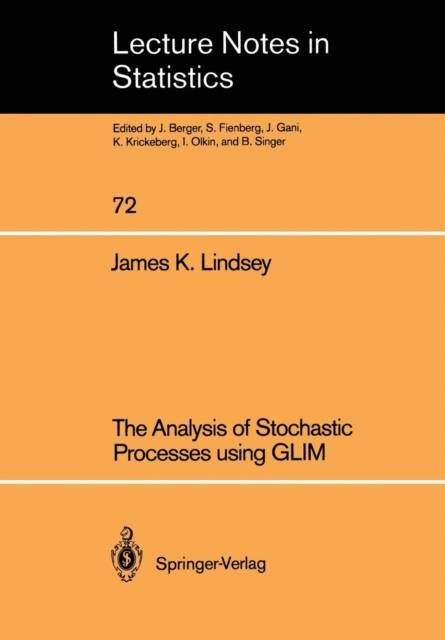
- Afhalen na 1 uur in een winkel met voorraad
- Gratis thuislevering in België vanaf € 30
- Ruim aanbod met 7 miljoen producten
- Afhalen na 1 uur in een winkel met voorraad
- Gratis thuislevering in België vanaf € 30
- Ruim aanbod met 7 miljoen producten
Zoeken
Omschrijving
The aim of this book is to present a survey of the many ways in which the statistical package GLIM may be used to model and analyze stochastic processes. Its emphasis is on using GLIM interactively to apply statistical techniques, and examples are drawn from a wide range of applications including medicine, biology, and the social sciences. It is based on the author's many years of teaching courses along these lines to both undergraduate and graduate students. The author assumes that readers have a reasonably strong background in statistics such as might be gained from undergraduate courses and that they are also familiar with the basic workings of GLIM. Topics covered include: the analysis of survival data, regression and fitting distributions, time series analysis (including both the time and frequency domains), repeated measurements, and generalized linear models.
Specificaties
Betrokkenen
- Auteur(s):
- Uitgeverij:
Inhoud
- Aantal bladzijden:
- 294
- Taal:
- Engels
- Reeks:
- Reeksnummer:
- nr. 72
Eigenschappen
- Productcode (EAN):
- 9780387977614
- Verschijningsdatum:
- 23/04/1992
- Uitvoering:
- Paperback
- Formaat:
- Trade paperback (VS)
- Afmetingen:
- 170 mm x 244 mm
- Gewicht:
- 485 g

Alleen bij Standaard Boekhandel
+ 279 punten op je klantenkaart van Standaard Boekhandel
Beoordelingen
We publiceren alleen reviews die voldoen aan de voorwaarden voor reviews. Bekijk onze voorwaarden voor reviews.











